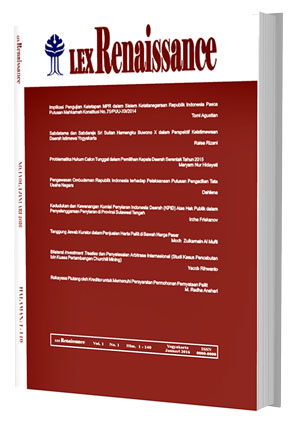Main Article Content
Abstract
To meet the requirements of the bankruptcy proposal is with the existence of two or more creditors. However, there is a creditor that does not have a legal document known as the fictive creditor. The issues in this research included first; what is meant by fictive creditor? Second, how is the regulation of fictive creditor? This is a normative research in which the results of the research concluded that first, the fictive creditor is a creditor that does not have any valid document and the existence if none but emerged for certain purpose by the creditor or debtors themselves. Second, if this occurs the fictive creditor can be deceived with the articles on the falsification as regulated in Criminal Code. Those provisions are related to the issue of the letters not containing the truth or letters are adulterated as regulated in Chapter XII entitled “Tentang Pemalsuan Surat” (About the Letter Forgery), particularly Article 263, 264, and 266. There is one article 520 related to PKPU.
Keywords: Fictive creditor, bankruptcy and forgery
Keywords
Article Details
Authors who publish with this journal agree to the following terms:
a. Authors retain copyright and grant the journal right of first publication with the work simultaneously licensed under a Creative Commons Attribution License that allows others to share the work with an acknowledgement of the work's authorship and initial publication in this journal.
b. Authors are able to enter into separate, additional contractual arrangements for the non-exclusive distribution of the journal's published version of the work (e.g., post it to an institutional repository or publish it in a book), with an acknowledgement of its initial publication in this journal.
c. Authors are permitted and encouraged to post their work online (e.g., in institutional repositories or on their website) prior to and during the submission process, as it can lead to productive exchanges, as well as earlier and greater citation of published work (See The Effect of Open Access).



